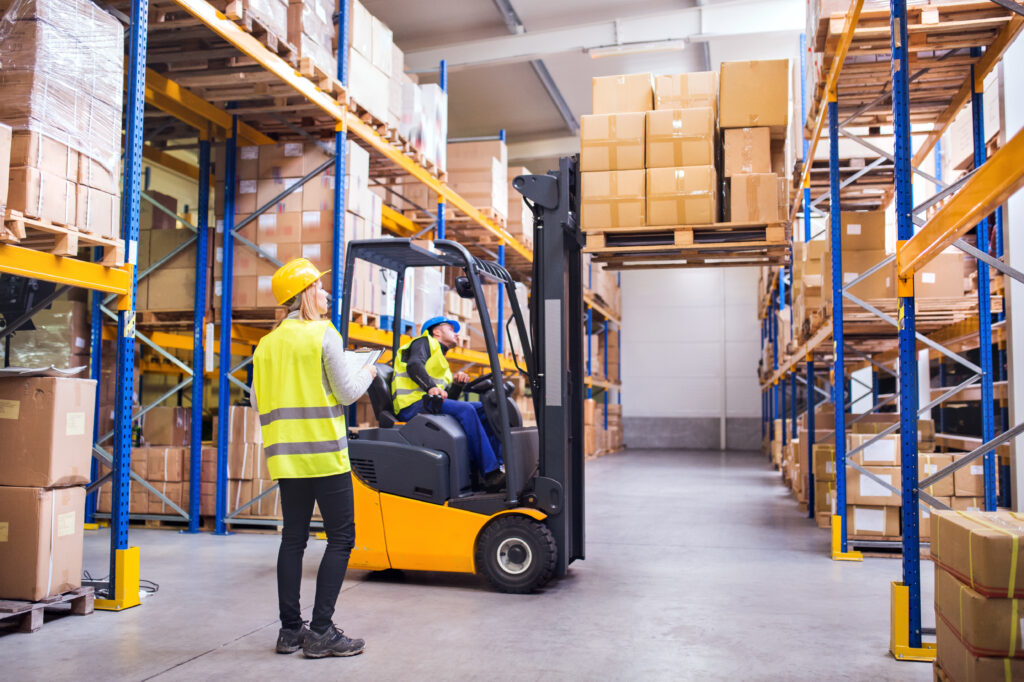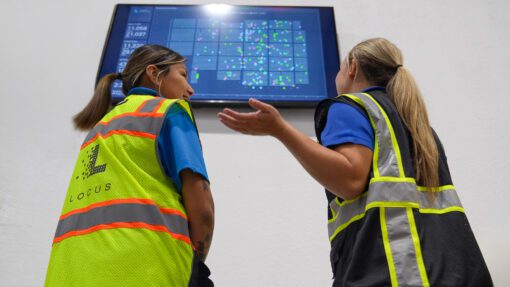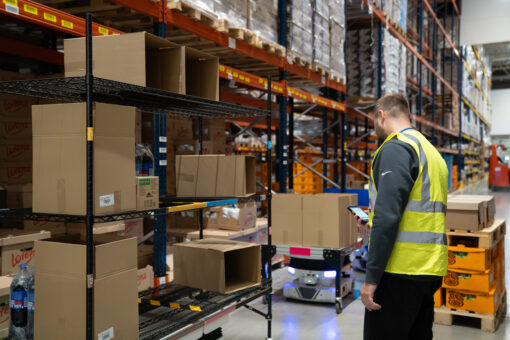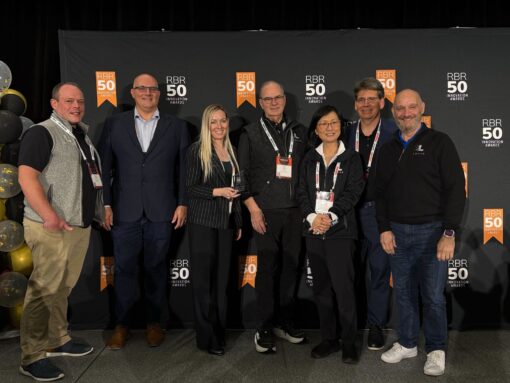WP: How to achieve 400 UPH with Locus Fast Pick
WP: How to achieve 400 UPH with Locus Fast Pick Download Now!
Robots, Forklifts, and AI for Safer, Smarter Warehouses
Erica Moyer, Sr. Product Manager

The growth of material handling equipment (MHE) in warehousing is expected to grow significantly within the coming years. This is driven by increasing e-commerce demand, use of automation and artificial intelligence (AI), and a focus on warehouse efficiencies. A steady, constant driver in this growth is powered industrial trucks (PIT), also known as forklifts, which are used to lift and move pallets of goods throughout a warehouse, loading and unloading, inventory replenishment, and helping to keep supply chains flowing. But as more warehouses integrate autonomous robots into their workflows, a new challenge has emerged in harnessing the power of artificial intelligence to ensure that human-operated equipment and autonomous robots can safely and efficiently share the same space.
With the increase of forklift equipment and robots working together in the same shared place, there is a growing need for robots to use AI to recognize, avoid, and adapt to forklift movement, which generates operational efficiency, reduces the risk of impacts, protects on-site assets, and ensures uninterrupted workflows.
Why Robots Steer Clear of Forklifts
- Operational Awareness & Preventing Potential Damage
A warehouse is a fast-moving environment where forklift operators constantly navigate aisles and docks, loading, and unloading pallets, staging, and repositioning inventory. Forklift operators make real-time, fast paced decisions, adjusting to changing conditions within the warehouse.
For robots and humans alike, working in a shared space with a forklift means increased diligence is needed. In a typical working scenario, you often see an order picker working in aisle with the operator working “at height,” meaning the operator platform is raised. If a robot is in the same aisle and its goal position is near an order picker, the robot may not recognize the order picker platform is raised and move underneath the operator's platform. In many cases, the operator working at height is blind to this unless the order picker is equipped with a camera under the platform that displays within the operator's carriage. If a camera is not present, the operator of the order picker may unknowingly come down on top of the robot, generating operator unease, and robot and/or product damage. To avoid this, smart automation solutions are being designed with object detection and avoidance in mind.
- Reducing Warehouse Congestion
In a busy fulfillment center, every second counts. Autonomous robots are programmed to follow optimized paths to complete their tasks efficiently. At times, a forklift may be positioned in a narrow aisle, which can block a robot’s route. One potential smart solution is a fleet of robots that harness AI-driven machine learning (ML) capabilities. With this, a robot can recognize on-site assets like forklifts and avoid. Based on the robot's mission state, forklift size, and aisle clearance, the robot can respond in several ways to ensure mission efficiency.
This real-time adaptability is crucial for meeting fulfillment deadlines. A warehouse bottleneck — whether caused by forklifts, misplaced inventory, or human congestion — can slow down order processing and disrupt entire supply chains.
- Overcoming the Limitations of Robotic Vision
Many autonomous robots rely on sensors, cameras, and LiDAR to detect obstacles. However, most are unable to detect objects at height, meaning they are unable to “see” if a forklift’s operator compartment or forks are raised. Machine learning is an application of artificial intelligence that involves training machines to execute a task without being specifically programmed for it, is one solution. In an autonomous robot application, the robot can run training algorithms on sets of data to achieve an expected outcome such as recognizing a forklift. Once the forklift is recognized, the robot’s AI driven ML model will predict a response based on the training data samples and the robot will respond accordingly.
The Future of Forklift Detection and Avoidance in Automated Warehouses
As warehouse automation continues to drive change, we will continue to see advanced systems that allow robots to work side by side with forklift equipment in real time. Some solutions involve direct integration between forklift tracking software and robotic fleet management systems, ensuring that robots are aware of forklift movements before they even encounter them.
Another approach is the use of predictive analytics, where AI analyzes traffic patterns in the warehouse to anticipate congestion and dynamically adjust robot workflows. Instead of reacting to obstacles, robots can proactively optimize their paths to avoid slowdowns before they happen.
By implementing detection and avoidance strategies, warehouses can create safer, more efficient environments where automation and traditional equipment complement each other.
How Locus Robotics Addresses AI driven Forklift Detection & Avoidance
At Locus Robotics, ensuring seamless collaboration between autonomous robots and traditional forklift equipment is a top priority. Through our advanced artificial intelligence development in object detection, avoidance, and workflow optimization, Locus Robots AI-driven machine learning will be able to recognize, avoid, and adapt within the warehouse environments without disrupting existing operations, helping to maximize productivity while maintaining a safe operating environment.
As automation continues to evolve, the ability for Locus Robots to use AI to drive ML to intelligently interact with forklifts will be a defining factor in warehouse efficiency and lead to smarter, safer, and more adaptive warehouse ecosystems.
Interested in finding out more about how Locus Robots can help improve throughput with unlimited flexibility in your warehouse? Let’s talk.
BIO:
Erica Moyer brings over 17 years of experience driving product innovation and market share growth. Prior to joining the Locus team in 2022, Moyer spent 6 years with The Raymond Corporation, driving new product development and growth with alternative energy solutions, Class 3 pallet truck and stacker lines and iWarehouse operator assist technologies. Moyer has an extensive background in material handling Product Management, building strong relationships while working in collaboration with multiple teams and stakeholders in the development and delivery of high-quality products, including line extensions and nascent product lines. Moyer holds a BA from the State University of New York at Plattsburgh.




